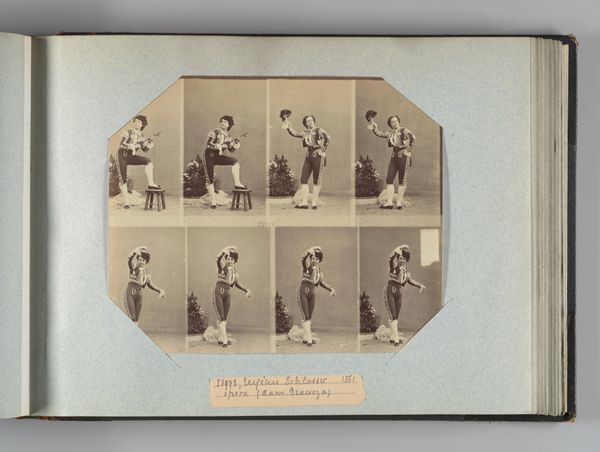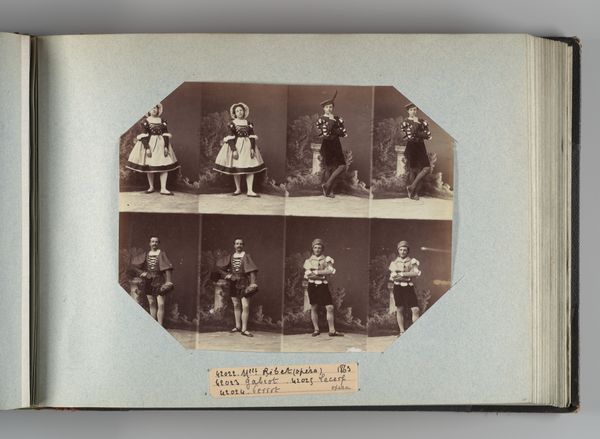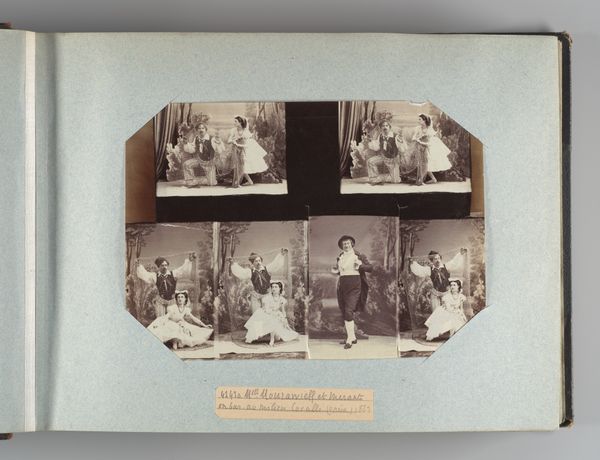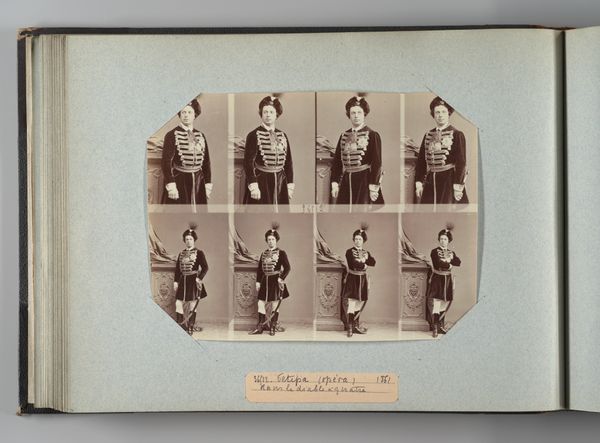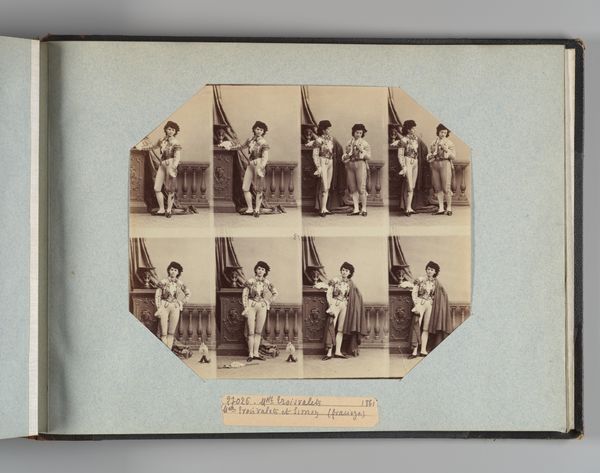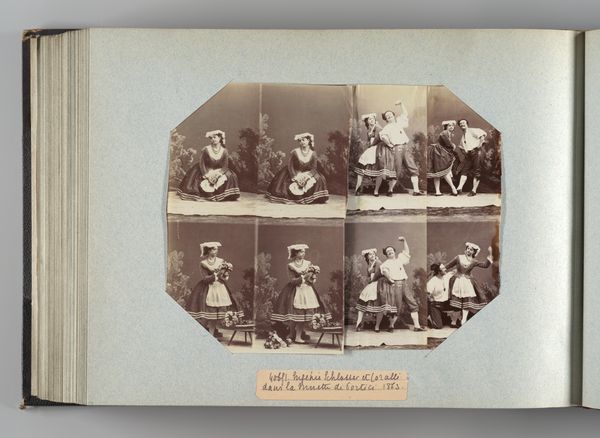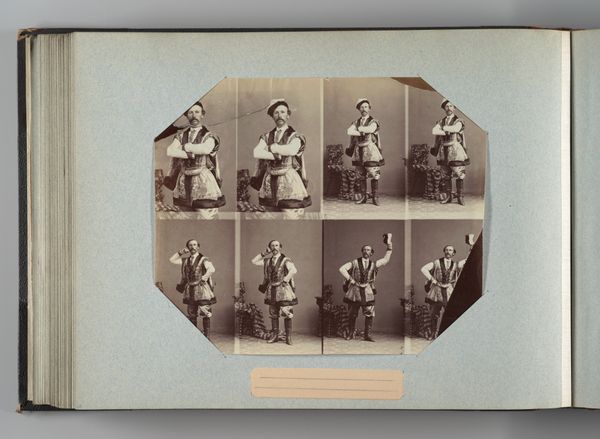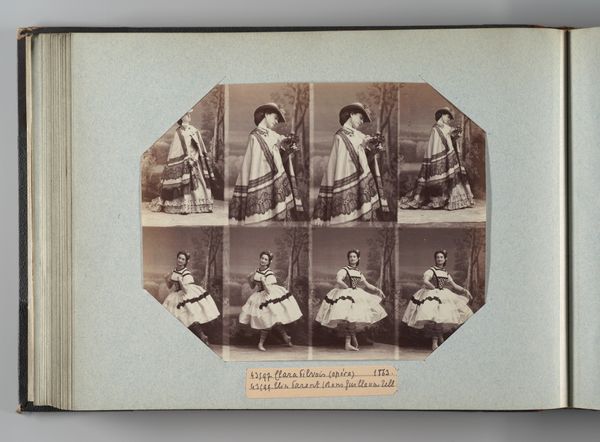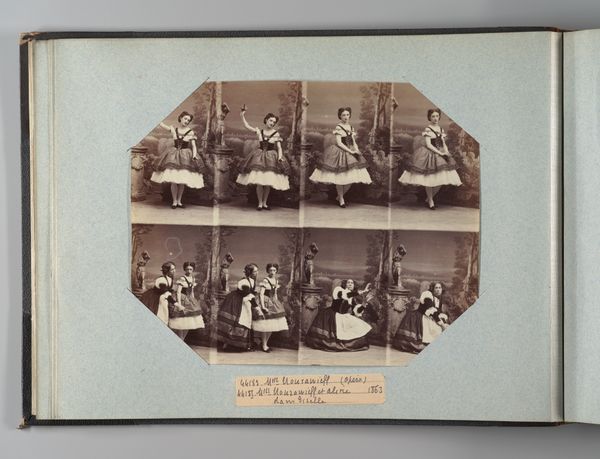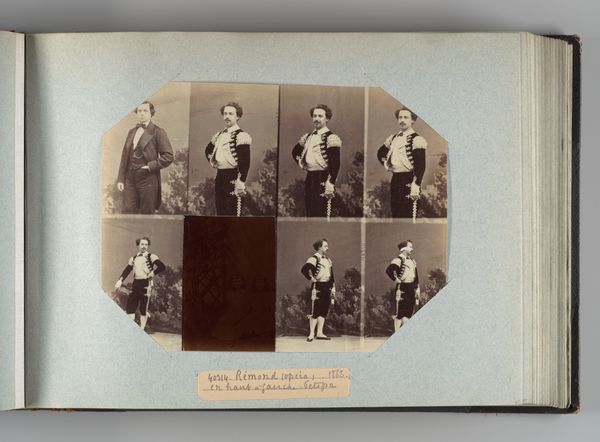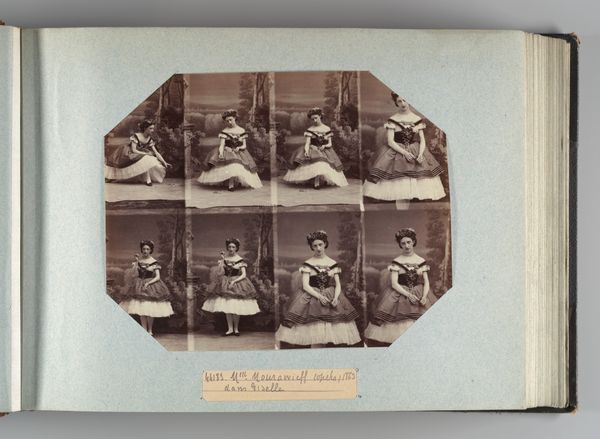
Dimensions: Image: 7 3/8 × 9 1/4 in. (18.8 × 23.5 cm) Album page: 10 3/8 × 13 3/4 in. (26.3 × 35 cm)
Copyright: Public Domain
Curator: Here we have André-Adolphe-Eugène Disdéri's "Eugénie Schlosser dans Gracioza," taken in 1861, presented as an albumen print. It's quite striking, isn't it? Editor: My initial impression is of a staged, almost theatrical arrangement. The series of poses, combined with the sepia tones, gives it a slightly dreamlike, detached quality. Curator: Precisely. Schlosser, an opera singer, is captured here in costume, enacting her role in "Gracioza". This series speaks to the 19th-century fascination with performance, identity, and how women navigated performative roles both on and off the stage. The costume itself, ostensibly masculine, worn by a woman, becomes a potent site for gender performance. Editor: Indeed. Consider the geometry of the composition, though. Each individual photograph is carefully framed, leading the eye through a sequence of gestures. Disdéri uses the albumen print medium to render subtle textures—look at the sheen of the fabric, the soft blur of the backdrop. There’s a captivating tension between the flatness of the print and the implied depth of the stage. Curator: I'd argue that the backdrop is intentionally minimal, serving to amplify the figure. Schlosser’s deliberate poses directly confront societal expectations and gazes. The "masculine" attire and confident stance subvert normative gender representations. It challenges patriarchal structures by visualizing a woman embodying traditionally male power. Editor: Yet, the overall effect isn't overtly subversive to my eye. The lighting and arrangement, while competent, lean towards the conventionally romantic, softening any truly radical message. Semiotically, the images speak of performance and representation, rather than pure revolt. Curator: Perhaps. However, by occupying a visually dominant position and appropriating masculine coded garments, Schlosser actively dismantles prescribed notions of feminine passivity. What seems “conventionally romantic” on the surface unravels under a more critical lens of feminist inquiry. Editor: An interesting dialogue emerges here between our interpretations. I am drawn to the image's compositional elements and subdued palette, while you emphasize the powerful act of gender role disruption embedded within it. Curator: Ultimately, Disdéri's image offers a glimpse into the complexities of gender and performance in the 19th century and reminds us that even seemingly conventional images can challenge and transform ingrained norms.
Comments
No comments
Be the first to comment and join the conversation on the ultimate creative platform.
